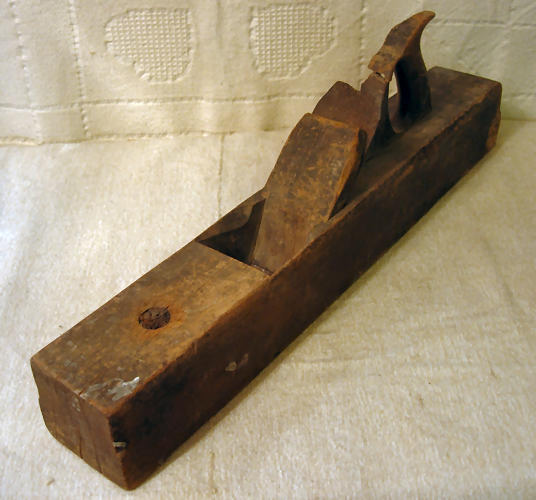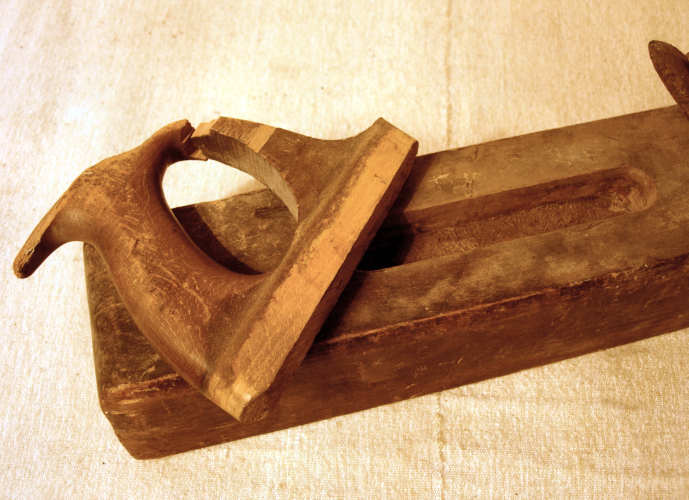

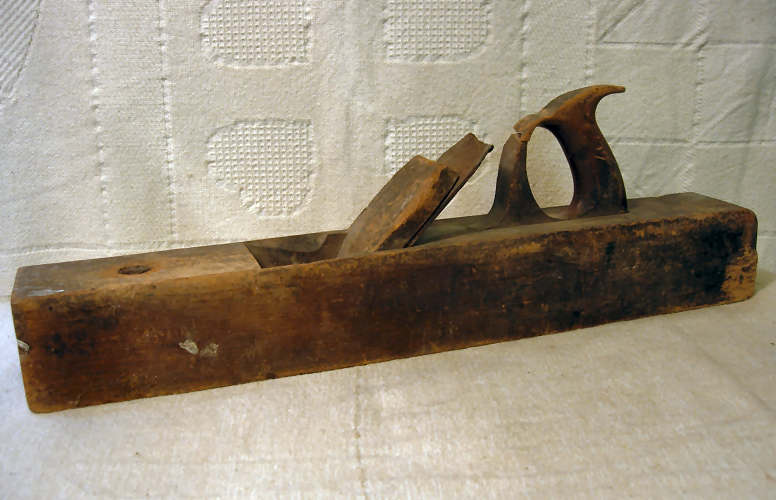
| Wood planes were used to smooth and shape the surface of a rough piece of lumber. They did this by means of a metal blade projecting through the bottom of a wood block which would be slid across the piece of rough lumber, in the process shaving a portion of the wood off the surface. Some people think that they were called wood planes because they were constructed primarily of wood, but that's not correct. These tools were called wood planes because they were employed on wood. A more common name given to this tool was block plane, perhaps because it was constructed using a block of wood as its primary structure. The carpenter who generally used a plane, such as is here exhibited, was known as a joiner. Wood Planes fell into either of two basic types: surfacing or smoothing planes and moulding planes. Each type was comprised of many differently named tools for particular uses. A surfacing plane, such as the one exhibited here, might be called a jack, trying, or floor plane, depending on its size and intended use. A moulding plane might be called a rabbet, plow, or tongue plane, again depending on its intended use. |
| Every surfacing and/or smoothing plane was constructed of a rectangular wooden block (hence another common name: block plane). In regard to the parts of the plane: The block itself was called the stock. In the center of the stock was the frog, an opening shaped like a "V" into which a large, flat blade, called the iron was inserted. It was positioned downward at an angle, projecting a short distance through the bottom of the opening, called the mouth (shown in the image directly below this text), and was held in place by a thin wooden wedge that was cut or knotched to allow shavings to pass upward. At the front end of the stock, a small, round, knob-shaped handle, called the button might be attached, while at the back end, or britch was the actual handle of the plane, called the tote. The carpenter would grasp the button with one hand and the tote with the other, in order to use the tool. As the plane was pushed away from the carpenter, the iron would cut into the piece of wood to be worked, and shave a thin sliver off of it. |
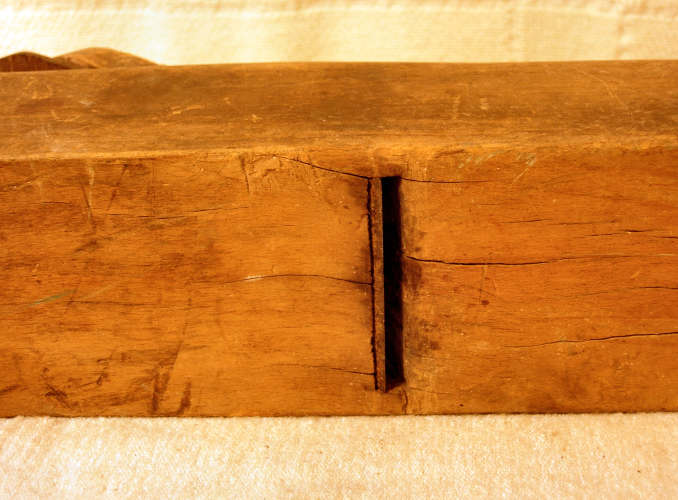
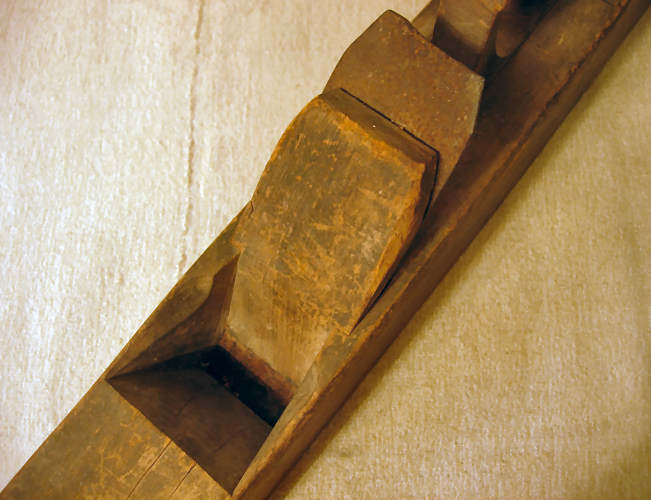
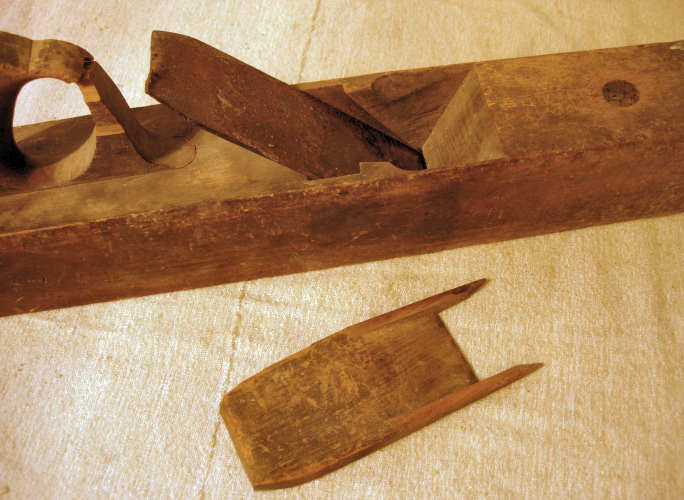
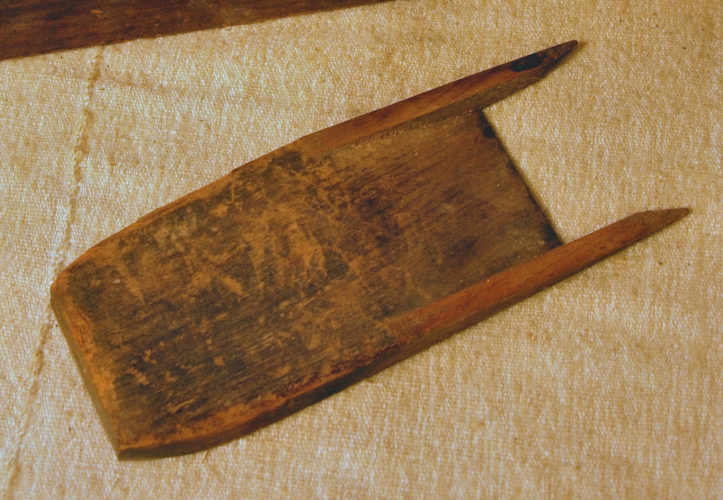
| The example shown here would have been called a trying plane. It measures 22 inches in length, and the stock is 3 inches square. It would have been used to smooth out the object after an initial amount of wood would have been removed by the jack plane. It can be seen, by the empty hole in the fore end, that the small handle called the button is no longer in the stock of this plane. Other images below show the knotched wedge-shaped piece of wood that holds the iron in place. Also note that the tote handle can be removed and replaced if necessary. It fits neatly into a shallow groove in the britch end of the stock. |
